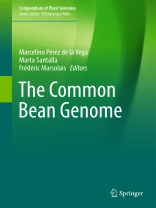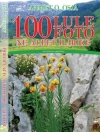This book provides insights into the genetics and the latest advances in genomics research on the common bean, offering a timely overview of topics that are pertinent for future developments in legume genomics. The common bean (Phaseolus vulgaris L.) is the most important grain legume crop for food consumption worldwide, as well as a model for legume research, and the availability of the genome sequence has completely changed the paradigm of the ongoing research on the species.
Key topics covered include the numerous genetic and genomic resources, available tools, the identified genes and quantitative trait locus (QTL) identified, and there is a particular emphasis on domestication. It is a valuable resource for students and researchers interested in the genetics and genomics of the common bean and legumes in general.
Tabela de Conteúdo
Common Bean: Economic Importance and Relevance to Biological Science Research.- Botany of the Phaseolus bean crops.- Domestication and Crop History.- Cytogenetics and Comparative Analysis of Phaseolus species.- Genetic mapping and QTL analysis in common bean.- Requirement of Whole-Genome Sequencing.- Common Bean Genomes: Mining New Knowledge of a Major Societal Crop.- Organelle Genomes in Phaseolus Beans and their Use in Evolutionary Studies.- Phytic acid Biosynthesis and Transport in Phaseolus vulgaris: Exploitation of New Genomic Resources.- What is Present at Common Bean Subtelomeres?: Large Resistance Gene Clusters, Knobs and khipu Satellite DNA.- Comparison of Gene Families: Seed Storage and other Seed Proteins.- A Comparison of Phenylpropanoid Pathway Gene Families in Common Bean. Focus on P450 and C4H Genes.- Phylogenomics: the Evolution of Common Bean as Seen from the Perspective of All of its Genes.- Prospects: The Importance of Common Bean as a Model Crop.












